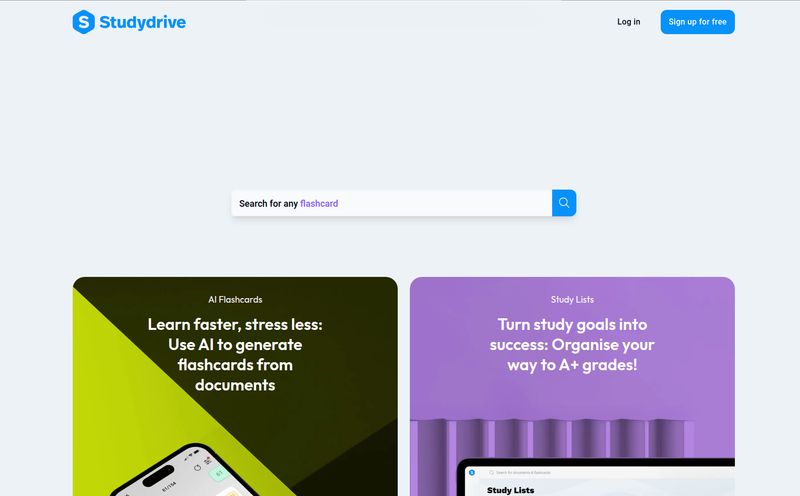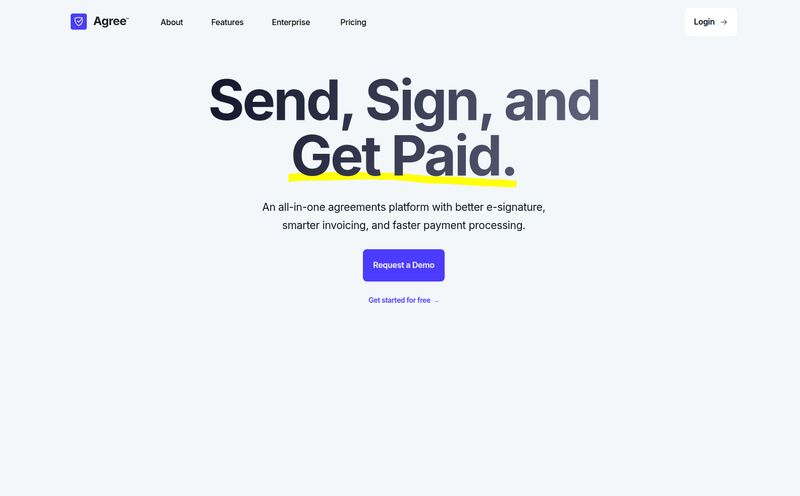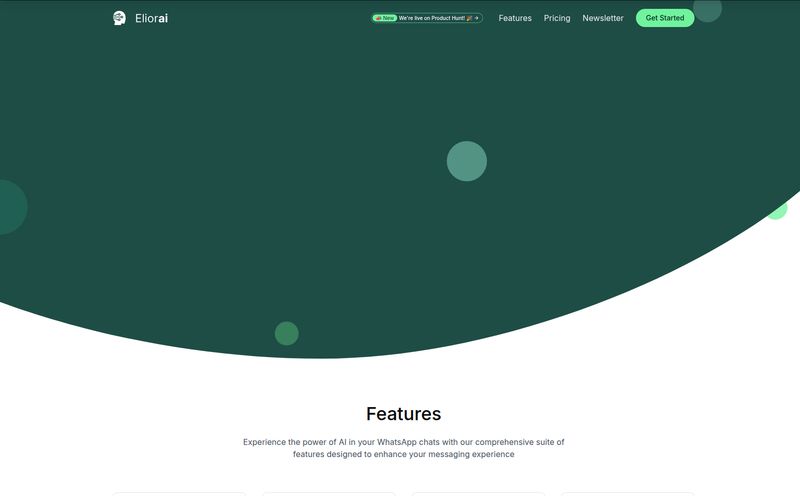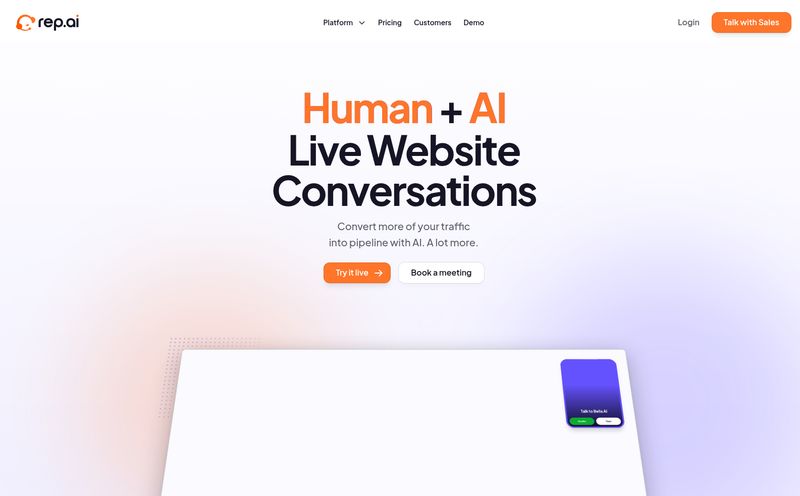I’ve been in the SEO and digital marketing game for... well, let's just say long enough to remember when 'keyword density' was a thing we all obsessed over. And through all those years, one constant, nagging headache has been data collection. The sheer, mind-numbing tedium of manually copying and pasting competitor data, product info, or lead lists. It’s the digital equivalent of washing dishes by hand when you know there’s a dishwasher right there.
I've tried it all. I’ve crashed countless browser tabs with data scraper extensions that promised the world and delivered a mess of broken CSVs. I even spent a miserable winter trying to teach myself Python, staring at tutorials for BeautifulSoup and Scrapy, only to realize I’d rather be doing… literally anything else. So when I started hearing whispers about a new generation of AI-powered, no-code tools, my cynical old-school marketer ears perked up. The latest one to cross my desk? Thunderbit.
It calls itself “The Next Gen AI Web Scraper.” A bold claim. But after spending some time with it, I gotta say… they might be onto something.
So, What Exactly Is Thunderbit?
Let's cut through the jargon. Thunderbit is a web scraping tool designed for people who don't speak code. Instead of wrestling with CSS selectors or XPath (shudder), you basically just tell it what you want in plain English. Think of it less like a programming tool and more like a conversation with a ridiculously efficient, data-obsessed virtual assistant.
You can point it at a website, a PDF, even an image, and say, “Hey, grab all the names, job titles, and email addresses from this page.” It then uses its AI brain to figure out what you mean, find the data, and organize it for you. It's built for sales teams hunting for leads, e-commerce managers monitoring competitor prices, and of course, people like us—SEOs and marketers who need clean data without selling our souls to the code gods.
The Features That Actually Matter
Any tool can pack its homepage with a list of features. But which ones actually make a difference in your day-to-day grind? Here's my breakdown of what makes Thunderbit tick.
The AI-Powered Scraping is Kinda Magical
This is the main event. The old way involved right-clicking, hitting 'Inspect Element,' and hunting for that elusive `div class="product-title-_1aB3c"` that would inevitably change the next time the website updated, breaking your entire setup. It was brittle and frustrating. Thunderbit throws that all out the window. Their AI-powered extraction means you're describing the data, not its container. This makes it way more resilient to website design changes. It's not perfect—a truly bizarrely coded site can still throw it for a loop—but its a massive leap forward in usability.
More Than Just Websites: Scraping PDFs and Images
This was a pleasant surprise. I've had clients send over PDF catalogs or image-based directories and ask for the data to be put into a spreadsheet. That used to mean a full day of manual entry. Thunderbit’s ability to pull structured data from these sources is a genuine time-saver and not something you see in every scraper out there. Huge plus.
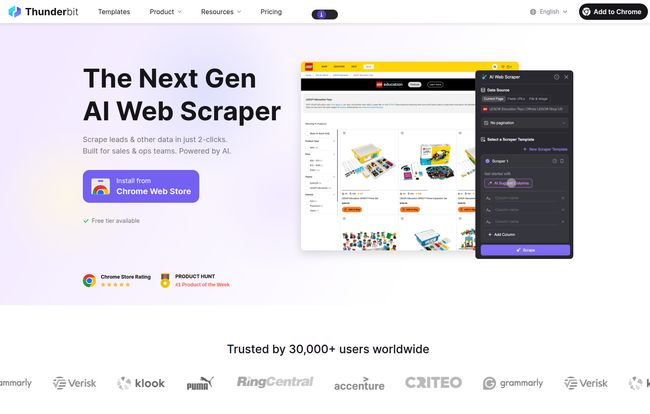
Visit Thunderbit
Integrations That Don't Suck (Hello, Google Sheets & Airtable)
A tool is only as good as its ability to play nice with your existing workflow. Getting data is only half the battle; you need to put it somewhere useful. Thunderbit gets this. It connects directly to Google Sheets, Airtable, and Notion. For me, the Airtable integration is killer. I can set up a scrape to run on a schedule and have fresh competitor data piped directly into my Airtable base every morning. It feels like living in the future.
Pre-Built Templates for the Laz… I Mean, Efficient
Let’s be honest, we often scrape the same sites over and over. LinkedIn for lead data, Google Maps for local business info, Zillow for real estate listings. Thunderbit comes with pre-built templates for these popular sites, so you don't even have to think. You just pick the template, enter your target URL, and go. It’s a fantastic shortcut that gets you 90% of the way there in about 10 seconds.
Let's Talk Money: The Thunderbit Pricing Plan
Alright, the all-important question: what's it going to cost? The pricing structure is credit-based, which has its pros and cons. Here's the rundown as of my writing this:
| Plan | Price | Best For |
|---|---|---|
| Free | $0 / month | Kicking the tires and running a few small, one-off scrapes. You get 5 pages/month. |
| Starter | $9 / month (billed yearly) | Occasional users or freelancers with light, recurring data needs. |
| Pro | $16.50 / month (billed yearly) | In my opinion, this is the sweet spot. For marketers, SEOs, and sales teams who rely on this data regularly. |
| Business | Custom | Enterprise-level stuff. High volume, custom needs, and you want priority support. |
The credit system essentially means you pay for what you use. Scraping a page costs credits, using advanced features costs credits, etc. It’s transparent, but you do need to keep an eye on your usage so you don’t blow through your monthly allowance in a day.
The Good, The Bad, and The... Scrapey
No tool is perfect, right? Here’s my no-fluff breakdown.
The good stuff is obvious: its incredibly easy to use, the AI is genuinely impressive, and the integrations are a lifesaver. It lowers the barrier to entry for data extraction so dramatically that anyone on your team can now be a data wizard.
On the flip side, the credit-based system might feel a bit restrictive if you have massive, unpredictable scraping needs. Also, lets be real, the AI's accuracy is heavily dependent on the quality of the target website. If you point it at a site built with 15-year-old spaghetti code and Flash animations, it's going to struggle. You have to set realistic expectations. It’s an AI, not a miracle worker.
My Final Verdict: Is Thunderbit Worth It?
So, do I recommend it? Yes, but with a specific audience in mind.
Thunderbit is a fantastic tool for:
- Marketing and sales professionals who need data but don't have coding skills.
- Solo entrepreneurs and small business owners who wear multiple hats.
- SEOs who need to quickly pull competitor data, SERP features, or backlink information without a complex setup.
- Anyone who finds the thought of 'CSS selectors' terrifying.
Who is it not for? Probably hardcore data scientists who need to scrape millions of pages with highly customized logic and transformations. They’re already comfortable in their Python environment, and that’s fine. This tool isn’t trying to replace Scrapy; it’s trying to replace the manual labor of copy-and-paste.
For what it aims to do—make web scraping accessible to everyone—Thunderbit absolutely nails it. It's one of the slickest and most intuitive data extraction tools I’ve come across in a long time.
It represents a shift from telling a machine how to do something to just telling it what you want. And that, for me, is a trend I can definitely get behind. It frees up our time and brainpower to focus on the more important stuff: strategy, analysis, and actually using the data to make smart decisions.
Frequently Asked Questions
Do I need to know how to code to use Thunderbit?
Absolutely not. That's the whole point! It’s designed to be a no-code tool that you operate using natural language commands.
Can Thunderbit scrape any website?
It can handle most modern websites, even those with JavaScript. However, extremely complex or poorly structured sites might pose a challenge. It's also important to respect website terms of service and not scrape sites that explicitly forbid it.
What's the main difference between the Free and Pro plans?
The biggest differences are the number of credits (and thus pages you can scrape), data retention periods, the speed of scheduled scrapes, and access to more advanced features like bulk scraping on the Pro plan.
How does the credit system work?
Think of credits as tokens. Each action, like scraping a page or enriching data, consumes a certain number of credits. Your plan gives you a monthly or yearly allotment of these credits.
Is web scraping legal?
This is a gray area and a common question. Generally, scraping publicly available data is considered legal, but it can be a breach of a website's terms of service. You should never scrape private or copyrighted information, and always be respectful by not overloading a website's servers. This is not legal advice, so consult a professional if you have concerns.
Can I really scrape data from a PDF file?
Yes! This is one of its stronger features. If you have a PDF with tables or lists of data, Thunderbit can often extract that information into a structured format like a spreadsheet.
